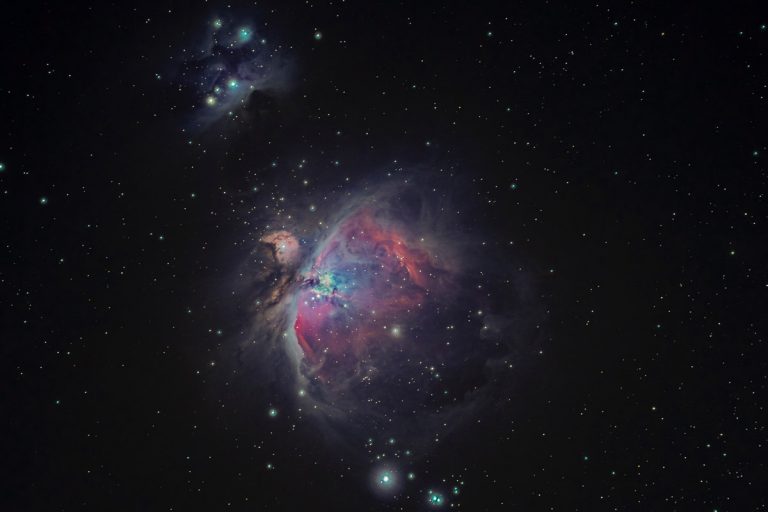Mysterious radio burst spotted within the Milky Way. Was it a message from space?
On 28 April 2020, a group of keen-eyed astronomers spotted a powerful but short burst of radio waves, lasting no more than a few milliseconds, coming from outer space and washing over Earth. To their amazement, they have now discovered that its source came from an object, possibly a magnetic star, within our very own galaxy. This is the first time scientists have been able to pinpoint the source of these mysterious cosmic signals.
Telescopes have picked up similar bursts before but until now, they had always come from outside of our galaxy, sometimes from billions of light-years away, which troubled researchers ever since the first signals were detected back in 2007. What exactly could these ephemeral blasts be, exploding stars? Or, alien technologies, perhaps?
The radio waves are officially known as ‘fast radio bursts’ (FRBs). We now know that at least one source of these FRBs is likely to be an exotic stellar object called a magnetar (the most powerful magnets in the cosmos), which is a type of young neutron star that was left over from a larger neutron star with a higher magnetic field after it collapses in on itself or explodes. Caltech graduate student and lead author of one of the studies published in the science journal Nature, Christopher Bochenek, stated in a press briefing that when he looked at the data for the first time, he “froze, and was basically paralysed with excitement.”
Magnetars host an incredibly powerful magnetic field that stores enormous amounts of energy, certainly capable of distorting the shapes of atoms, or FRBs. FRBs are assumed to appear once every second in the night sky, but flare up for just a few milliseconds each time. Scientists have only witnessed a miniscule fraction of these phenomena at play.
The discovery of this particular FRBs source, has been the magnetar living in (cosmically speaking) our own backyard, in fact just 30,000 light years away. Two different observatories, one being a telescope made up of more than a thousand radio antennas arranged like metal half pipes called CHIME in Canada, and then another array of low-tech (metal pipes and cake pans) radio telescopes spread out across California and Utah called STARE2, spotted this FRB coming from the same part of the sky, which also strengthened the credibility of the signal.
According to Bochenek, who led the STARE2 discovery team, the FRB was so bright that even a regular cell phone 4G LTE receiver would have theoretically been able to pick up the signal.
A lot is evidently gained from watching and waiting so patiently, because just a few days before the FRB was detected, the astronomers had started to notice that one already known magnetar had been becoming quite hyperactive in the sky. It was sending out X-rays as well as gamma rays, meaning that the radio waves they saw on 28 April had perfectly coincided with the particularly large burst of X-rays from the magnetar, therefore pointing it as the source.
Sadly this does give us the inclination that a message from an alien colony might be out the picture, however, CHIME’s Daniele Michilli, a postdoctoral fellow at McGill University said in a press briefing that she doesn’t think that “we can conclude that all fast radio bursts come from magnetars, but for sure, our models that have magnetars as the origins of fast radio bursts are very probable.” In other words, the brightest radio bursts, for example, may be produced by objects other than magnetars, according to astrophysicists.
There are two very compelling theories as to why and how these magnetars could produce these fast radio bursts. Astrophysicist Bing Zhang published an interesting review also in Nature along with the founding studies, and proposed two scenarios. In one, flares of particles are ejected from the magnetar’s surface and collide at extreme speed with surrounding debris, which proceeds to create a hot and highly magnetised maelstrom (vortex or whirlpool), which has the potential to give off both X-rays and radio waves.
In the other, which I personally find conceptually enthralling, Zhang proposes that the FRBs form as the magnetar’s super-intense magnetic field lines (like on Earth, radio waves are generated through directing electrons through a wire) get tangled, and disconnected, which releases vast amounts of energy in the process, causing FRBs.
So, aliens are still nowhere (officially) to be seen, that much is clear. But either way, while the professionals do their exciting job and find the facts for us to report to you, readers—I’m going to go to bed tonight imagining a jelly-fish like magnetar whipping its gamma ray tentacles across our electro-magnetic night sky.





